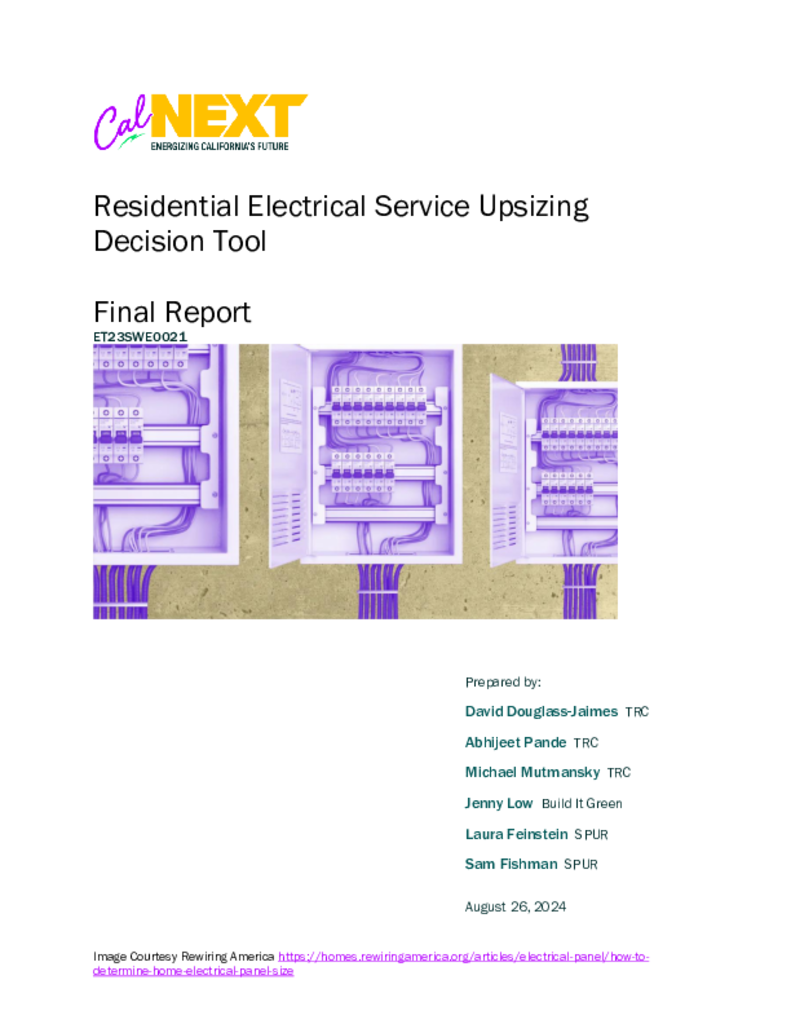ET23SWE0021 - Residential Electrical Service Upgrade Decision Tool
The proposed project’s goal is to leverage current research and practices to provide a “Residential Service Upgrade Decision Tool,” hereafter referred to as “Tool”, focused on existing residential single-family and multifamily buildings. The Tool is aimed at utilities, homeowners, contractors, regulators, and policy makers, and will include several decision-trees providing guidance on when to upsize electrical panels and service versus alternatives to manage available panel and service capacity to electrify homes. The Tool will provide differentiated information based on the intended audiences. For example, a homeowner will be able to assess the likely need for a panel/service upsizing or alternatives to avoid the same at their individual home. A contractor may use the Tool to view several scenarios for homes they typically service to estimate which of their projects will likely need panel/service upsizing or avoid it. Utility and policy makers will be able to run scenarios allowing them to estimate the potential needs at a statewide, utility specific or locational basis based on input assumptions on home size, location, existing panel capacity and likely electrification upgrades. The Tool will also be differentiated based on whether it is for a single-family home versus a multifamily building.
Electrification of California's residential housing stock is essential to meet the state's climate and clean air objectives. However, a common misconception is that electrification necessitates electrical panel and service upgrades for all homes with less than 200-amp capacity, potentially leading to costly investments and significant grid infrastructure enhancements. To address this challenge, our project aimed to develop a "Residential Service Upgrade Decision Tool" tailored to both individual homeowners and utilities. The tool guides contractors and homeowners in determining whether existing electrical panels can support electrification goals without upgrades, while also providing utilities with data to inform broader investment strategies.
The tool was developed through extensive research, stakeholder engagement, and analysis of existing tools. The homeowner-focused version assists in optimizing panel capacity based on specific electrification priorities, while the utility version offers insights into the potential impact of electrification across building portfolios. Our results demonstrate the feasibility of using these tools to minimize the need for expensive panel upgrades, offering a practical approach to achieving widespread residential electrification. Future recommendations include expanding the tool's functionality, ensuring it remains up-to-date with evolving codes and technologies, and making it publicly accessible. These efforts will support a cost-effective transition to electrification, reducing the burden on homeowners and utilities alike.

